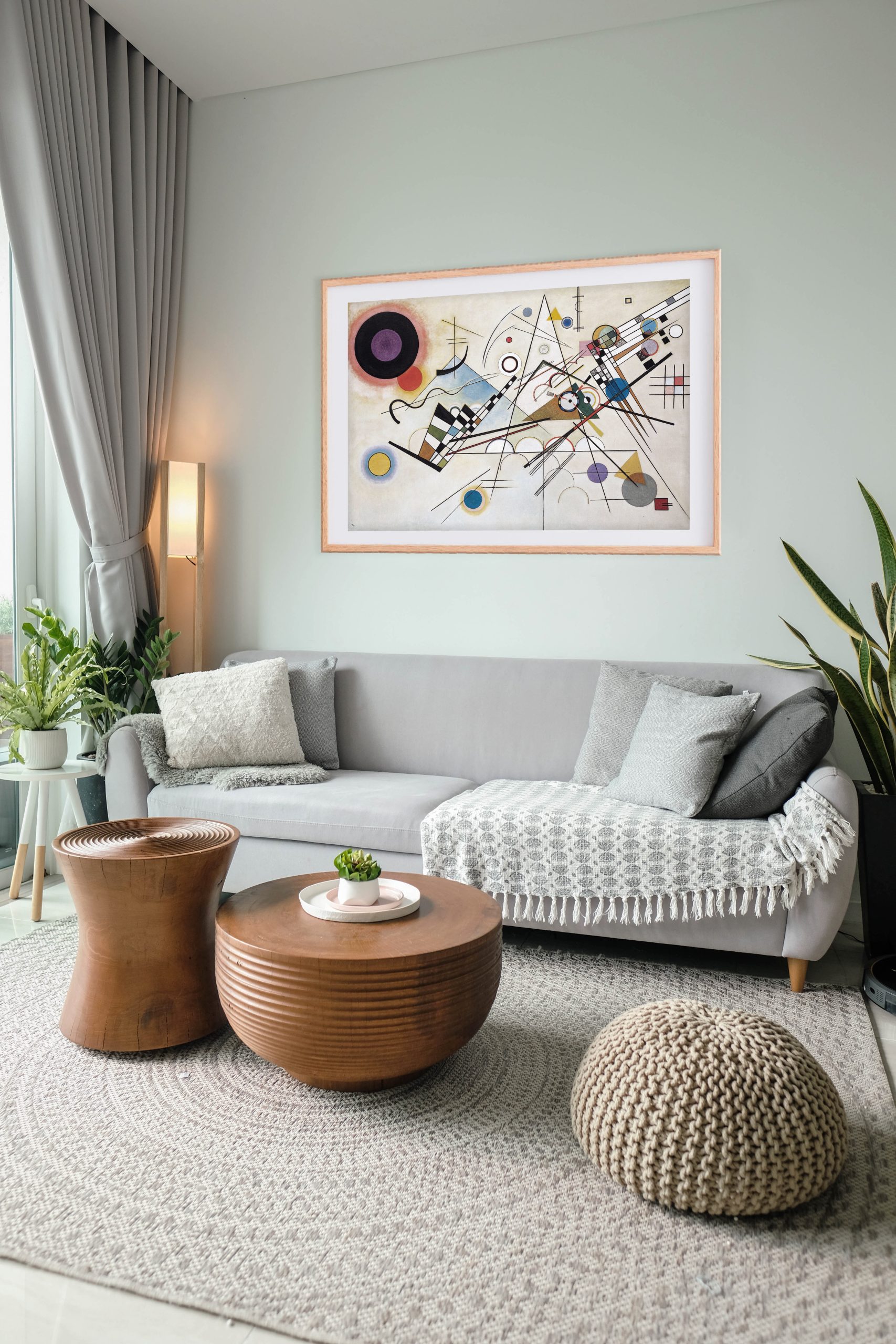Composition VIII
Measuring 140.0 × 201.0 cm, this 1923 oil on canvas epitomizes Suprematism and Constructivism through its geometric forms and precise use of color. Created while Kandinsky was teaching at the Bauhaus, the painting emphasizes structure and balance, with shapes like triangles and circles conveying emotional and spiritual content. Currently housed at the Solomon R. Guggenheim museum in New York.
Ratings / Reviews
Información adicional
| Dimensions | Original: 140.0 com × 201.0 cm, Small: 56 cm × 80.4 cm, Medium: 84 cm × 120.6 cm, Large: 112 cm × 160.8 cm |
|---|
$236.00 – $1,120.00Price range: $236.00 through $1,120.00
Composition VIII, painted by Wassily Kandinsky in 1923, marks a significant departure from the earlier expressive chaos of his Composition VII (1913). Created during Kandinsky’s time teaching at the Bauhaus, this work represents a shift towards rationality and geometric order, emphasizing precision, structure, and clarity. Measuring 140.0 × 201.0 cm, this oil on canvas is a vivid synthesis of Suprematism, Constructivism, and the Bauhaus ethos, reflecting Kandinsky’s evolving thoughts on modern, non-objective art.
The stark geometric forms in Composition VIII are in stark contrast to the flowing, operatic composition of Composition VII. In this work, color takes a secondary role to form. Kandinsky’s decision to use triangles, circles, and checkerboard patterns as central motifs reflects his belief in the inherent spiritual power of these shapes. The dynamic interplay of these forms creates a sense of movement and balance, with hard-edged lines and flat planes of color guiding the viewer’s eye across the canvas. The geometrically structured layout pulses with energy, illustrating Kandinsky’s view that modern art should express deeper content through abstract forms rather than representational imagery.
Kandinsky’s use of form over color in this composition is a direct reflection of his ideas about non-objective art, where abstract elements could convey emotional and spiritual meaning without relying on recognizable objects or figures. The clarity of the linear elements in Composition VIII shows Kandinsky’s commitment to a more analytical approach to painting, a marked shift from the more intuitive style that characterized much of his earlier work.
Today, Composition VIII resides at the Museo Solomon R. Guggenheim in New York, where it stands as a prime example of Suprematism and the evolution of abstract art in the early 20th century. The work continues to inspire viewers with its precision, spiritual undertones, and vision of a new, non-representational artistic language.


